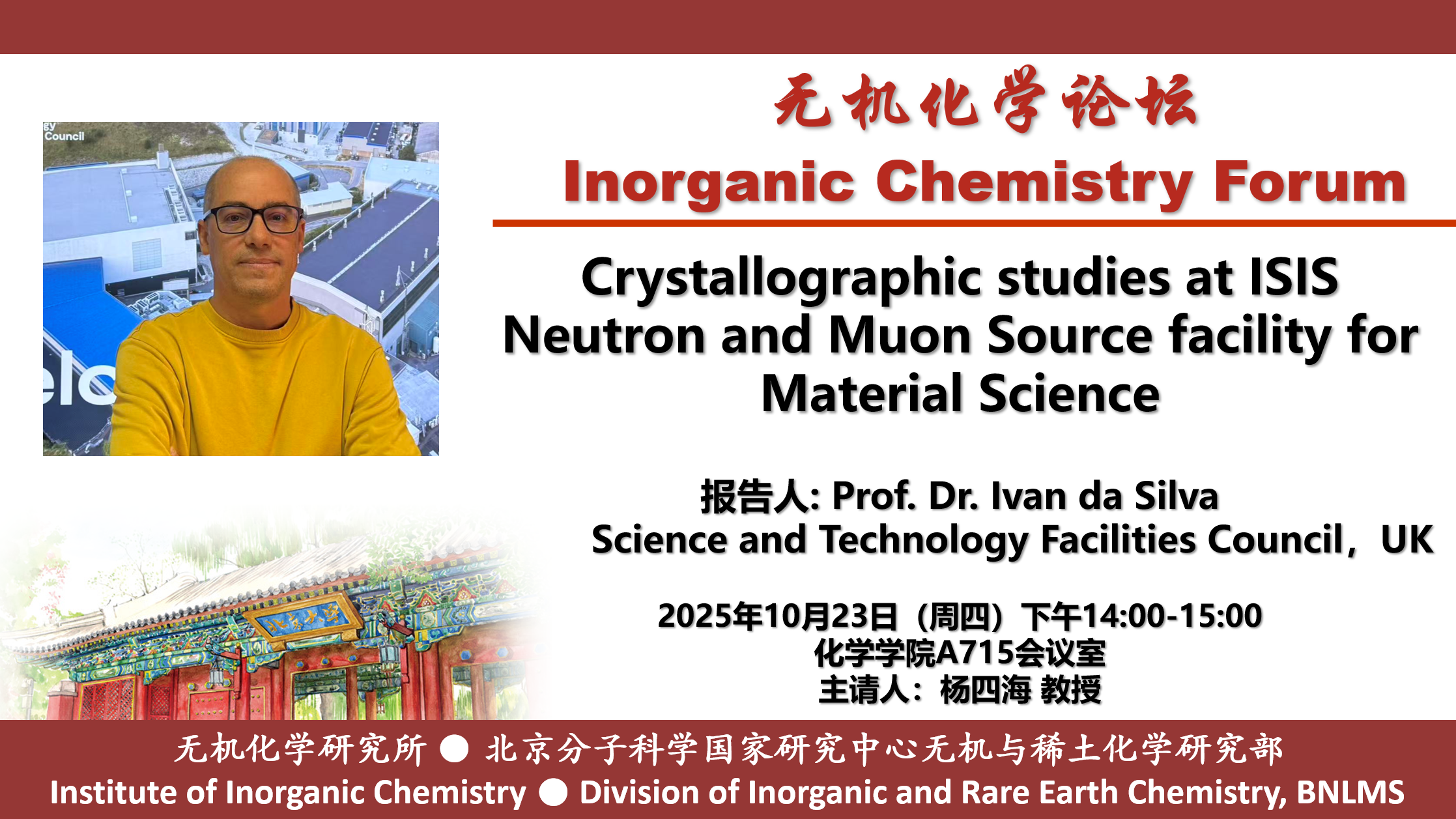
Abstract
The ISIS Neutron and Muon Source provides a world-leading platform for the crystallographic investigation of materials, enabling insights that are often inaccessible with conventional X-ray techniques. Neutrons, with their deep penetration, sensitivity to light elements, and ability to distinguish neighbouring elements in the periodic table, offer unique advantages for studying complex materials. This presentation will highlight how neutron diffraction and related crystallographic methods at ISIS are advancing materials science across diverse fields, including energy storage, catalysis, and functional framework materials. Case studies will illustrate how neutron diffraction reveals subtle structural details such as hydrogen positions or magnetic ordering, thereby complementing and extending traditional X-ray crystallographic approaches. By integrating neutron scattering with complementary methods, the ISIS facility continues to play a critical role in shaping the design and understanding of novel materials with real-world applications.
Biography
Dr Ivan da Silva’s main expertise and research are focused on Materials Science, specifically on Crystallography.
After graduating in Physics at the University of La Laguna (Spain) in 1999, he got his PhD in 2006 under the supervision of Prof. C. Giacovazzo, with a thesis entitled "Latest advances in the resolution of crystal structures from powder diffraction data". The research work was developed at the Istituto di Cristallografia (Italy), one of the best-known research institutes in the field of crystallography. This work led to the publication of several papers on the development of new methods and algorithms for the determination of crystal structures from powder diffraction data.
In 2007 he started a six-year-long Post-Doc on the Spanish beamline of the ESRF synchrotron (France), carrying out development and maintenance work on the X-ray powder diffraction, X-ray absorption and surface/interface diffraction stations, as well as acting as local contact for external users for all these experimental techniques.
In 2013 he got a Post-Doc position at the ISIS neutron source (UK), working on developing and implementing new crystallographic methods, focused on the determination of the crystal structure of Metal-Organic-Framework (MOFs) compounds and localization of molecules adsorbed in the compounds, from X-ray and/or neutron powder diffraction data.
Since 2014 he has been working as an Instrument Scientist at the ISIS neutron source, providing scientific support to external users performing neutron powder diffraction experiments on the GEM diffraction instrument and contributing to the development of new capabilities for the powder diffraction technique at ISIS, including new instrumentation, sample environments, and diffraction data analysis techniques.